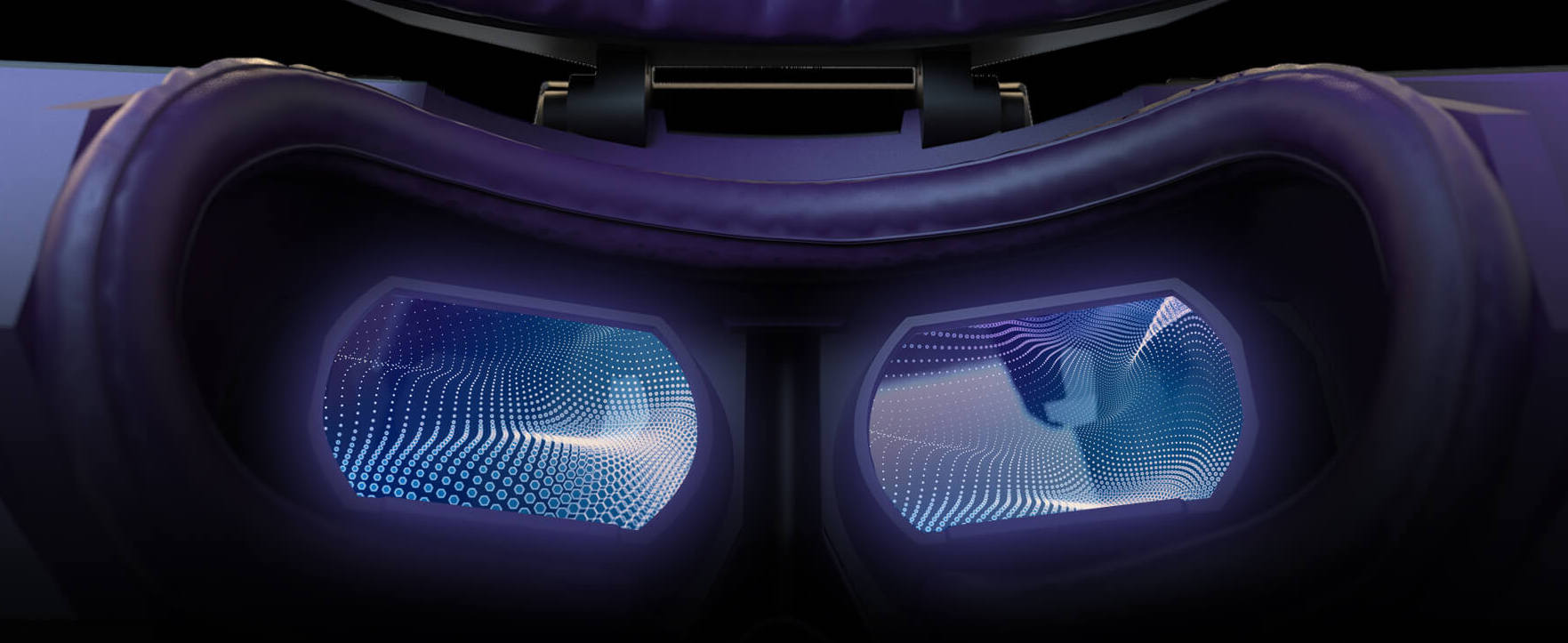Published: August 13, 2018
Topics: Enterprise VR, New features, Press release, Technology
Behind the curtain of new power-features that will make the smart professional VR headset even smarter
VRgineers recently launched XTAL, its newest smart high-resolution VR headset for professionals with one goal: to change how designers and engineers create and prototype, scientists do research, and people train with virtual reality.
XTAL introduced a set of breakthrough features to the world of professional VR. It starts with superior high-resolution imagery and visual accuracy that makes it easy to read a text in VR and see the finest details. Together with the wide natural field-of-view, it immerses the user fully, making it an ideal tool for serious simulations and training applications. XTAL also introduced AutoEye, its proprietary automatic lens alignment system to ensure the best image quality for all users, and smart intuitive controls with embedded Leap Motion hand-tracking sensor and voice commands. Coupled with professional software integrations, e.g. into Autodesk VRED, and high data security standards, this makes XTAL a powerful tool for a broad range of enterprise use-cases, including high-end visualization, realistic virtual prototyping, and professional pilot training, to name a few. The headset started selling in July this year with first deliveries coming in September.
More to look for
Now VRgineers is planning to release three upgrades which will raise the bar again, defining a new category of smart professional VR headsets.
The first two upgrades are on the software side. Building on existing XTAL sensors already present in the headset, they will unleash their full capabilities, giving users new unexpected features: inside-out tracking enabling full 6DoF movement without the need for external tracking hardware, and advanced eye-tracking for foveated rendering, marketing analytics, improved headset security and more.
The third upgrade is a new proprietary high-resolution pass-through camera module called RealEye. Optimized for high-resolution VR it will give XTAL new mixed reality capabilities allowing users to bring virtual objects into a real-world environment in the highest visual quality. All these upgrades will substantially expand the range of professional use cases that will be possible with XTAL.
Inside-out Tracking – freedom and accuracy
The VR experience is only as good as the tracking of the headset is. This is especially true in professional use where VR is used for making design decisions or training in realistic simulations.
The new inside-out tracking functionality of XTAL will offer two major improvements in that regard – more freedom and increased accuracy. In a standalone mode, you will be able to use XTAL without any external tracking hardware eliminating cables, wall mounts, and base stations. This is great for plug’n’play scenarios where simplicity and freedom of movement are crucial and complex setup gets in the way. Think of a designer checking her creation while tuning the design at her office desk or a customer scenario at a retail store like a VR car configurator at a dealership.
On the other hand, in complex industrial use cases where accuracy plays a key role, inside-out tracking will provide valuable additional position data to be combined with enterprise-grade tracking solutions supported by XTAL, like the AR Tracking, Optitrack or SteamVR Lighthouse 2.0. Adding in the headset’s internal gyroscope and accelerometer data, this complex sensor fusion will give XTAL an unparalleled tracking accuracy suitable for even the most demanding industrial and healthcare applications.

Full-featured eye-tracking
The second software upgrade will unlock the potential of XTAL’s proprietary eye-tracking system currently used for the AutoEye functionality to automatically adjust the lenses’ position to user’s individual interpupillary distance for the best visual experience. This upgrade will open the internal eye camera system to developers, allowing them to consume raw camera images, as well as detected retina centers. This will bring XTAL users a broad range of advanced ways to use eye-tracking like foveated rendering, marketing research, medical diagnostics, new training programs, even headset security by locking it to a particular person. And we are just scratching the surface of the possibilities there.
From VR to XR
Giving the “X” in XTAL a new meaning, VRgineers plans to introduce a new pass-through camera module for mixed reality or XR. The high-resolution front-facing cameras will cover the headset’s full 170º field-of-view. The new proprietary XR module is designed to project the user’s environment into the headset and detect obstacles to avoid collisions. Together with the embedded Leap Motion hand-tracking sensor, it takes mixed reality to the next level.
“The emerging virtual working environments will eventually extend, replace, and overlap with our physical world, providing designers and engineers with ‘superpowers’ allowing them to work concurrently in several different places at the same time, manipulating object properties in real time while staying connected to the world around them,” says Marek Polcak, CEO of VRgineers.
Currently, VRgineers headsets are used for design evaluation, virtual prototyping, virtual product configuration, and local and remote employee training, like pilot training. Car manufacturers, such as Audi, BMW and VW are using VRgineers headsets to design and bring new models to market.
The new upgrades will be available to all existing VRgineers XTAL users. The new VRgineers XTAL headset is selling for the price of USD 5,800 or EUR 4,900. VRgineers is based in Prague with a U.S. office in Los Angeles. For more information, visit vrgineers.com.

